Vadodara is the third-largest city in the Western Indian state of Gujarat, after Ahmedabad and Surat. It is the administrative headquarters of Vadodara District and is located on the banks of the Vishwamitri river, 139 kilometres (86 miles) from the state capital Gandhinagar. The railway line and NH 8 that connect Delhi and Mumbai pass through Vadodara. It is known as a Sanskari city of India.
As of 2011, Vadodara had a population of almost 1.8 million+ people.The city is known for the Lakshmi Vilas Palace, the residence of Baroda State's Maratha royal family, the Gaekwads. It is also the home of the Maharaja Sayajirao University of Baroda, the largest university in Gujarat. An important industrial, cultural and educational hub of western India, the city houses several institutions of national and regional importance while its major industries include petrochemicals, engineering, chemicals, pharmaceuticals, plastics, IT and foreign exchange services.
History
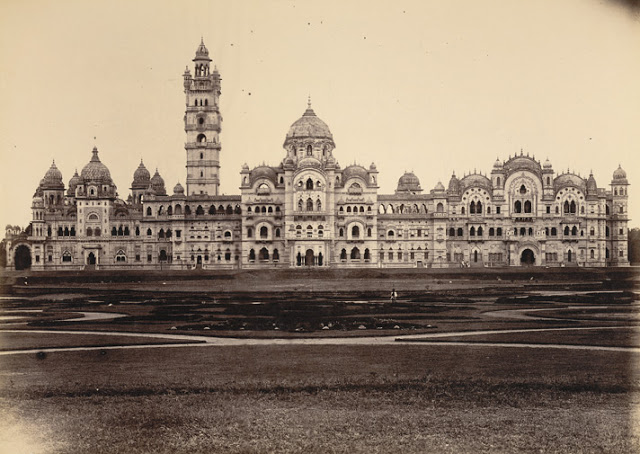 Early History
Early History
The first recorded history of the city is that of the early trader settlers who settled in the region in 812 AD. The
province was mainly Hindu-dominated with Hindu kings ruling until 1297. The Gupta Empire was the first power in the
region in the early years of the CE. Later, the region was taken over by the Chaulukya dynasty. By this time Muslim rule
had spread across India, and the reins of power were then snatched by the Delhi Sultans. The city was ruled for a long
time by these Sultans until they were overthrown by the Mughals.
Baroda State was a former Indian State. Vadodara's more recent history began when the Maratha general Pilaji Gaekwad
conquered Songadh from the Mughals in 1726.Before the Gaekwads captured Baroda, it was ruled by the Babi Nawabs, who were
the officers of the Mughal rulers. Most notably, from 1705–1716, Sardar Senapati Khanderao Dabhade led the Maratha
Empire forces in Baroda. Except for a short period, Baroda continued to be in the reign of the Gaekwads from 1734 to 1948.
Initially detailed to collect revenue on behalf of the Peshwa in Gujarat, Pilaji Gaekwad remained there to carve out a
kingdom for himself. Damajirao, who was son and successor of Pilaji Gaekwad, defeated the Mughal armies and conquered
Baroda in 1734.His successors consolidated their power over large tracts of Gujarat, becoming easily the most powerful
rulers in the region. After the Maratha defeat in the Third Battle of Panipat in 1761,control of the empire by the
Peshwas weakened as it became a loose confederacy, and the Gaekwad Maharajas ruled the kingdom until it acceded to
Independent Republic of India in 1949. In 1802,the British intervened to defend a Maharaja that had recently inherited
the throne from rival claimants, and Vadodara concluded a subsidiary alliance with the British that recognised the
Kingdom as a Princely state and allowed the Maharajas of Baroda internal political sovereignty in return for recognising
British 'Paramountcy', a form of suzerainty in which the control of the state's foreign affairs was completely
surrendered.
Vadodara is located at 22.30°N 73.19°E in western India at an elevation of 39 metres (128 ft). It is the 18th-largest
city in India with an area of 235 square kilometres (91 sq mi) and a population of 2.1 million, according to the 2010–11
census. The city sits on the banks of the Vishwamitri River, in central Gujarat. The Vishwamitri frequently dries up in
the summer, leaving only a small stream of water. The city is located on the fertile plain between the Mahi and Narmada
Rivers. According to the Bureau of Indian Standards, the cosmopolis falls under seismic zone-III, in a scale of I to V
(in order of increasing proneness to earthquakes).
Despite the roughly 800 mm of precipitation that the city receives annually, Vadodara features a semi-arid climate (BSh)
under Köppen's Climate classification due to the area's high potential evapotranspiration. There are three main seasons:
Summer, Monsoon and Winter. Aside from the monsoon season, the climate is dry. The weather is hot during March to July,
when the average maximum is 40 °C (104 °F), and the average minimum is 23 °C (73 °F). From November to February, the
average maximum temperature is 30 °C (86 °F), the average minimum is 15 °C (59 °F), and the climate is extremely dry.
Cold northerly winds are responsible for a mild chill in January. The southwest monsoon brings a humid climate from
mid-June to mid-September. The average rainfall is 93 cm (37 inch), but infrequent heavy torrential rains cause the river
to flood like the 2005 Gujarat flood or the 2008 Indian floods which were catastrophic.
The city is on the major rail and road arteries joining Mumbai with Delhi and Mumbai with Ahmedabad. Due to this Vadodara
is known as a Gateway to the Golden Quadrilateral.
Vadodara Airport is located north-east of the city. Vadodara has flight connections with Mumbai, New Delhi, Hyderabad,
Chennai, Kolkata and Bangalore. A new integrated international terminal has been constructed at the Vadodara airport
and was inaugurated in October 2016. Vadodara is the first Green Airport in Gujarat and Second Green Airport in India
after Kochi.
Vadodara was part of the historic Bombay, Baroda and Central India Railway (BBCI), which arrived in the city in January
1861.On 5 November 1951 the BBCI Railway was merged with the Saurashtra, Rajputana and Jaipur railways to create the
Western Railway. Vadodara Railway Station now belongs to the Western Railway zone of Indian Railways and is a major
junction on the Western Railway Main Line.
National Highway 8, connecting Delhi and Gandhinagar with Ahmedabad to Surat and Mumbai, passes through the city.
Vadodara is also connected with Ahmedabad through Indian National Expressway 1 a part of the golden quadrilateral, a
97-kilometre (60 mi) stretch of a superhighway with exits at Anand, Nadiad, S.P.Ring Road and finally Ahmedabad. In the
near future, this expressway will be extended southwards from Vadodara all the way up to Mumbai. The necessary land
acquisition work is in progress and the government has placed the project on a fast-track priority.
Sayaji Gardens, popularly known as Kamati Baug, is the largest garden in Western India, spreading over 45 hectares of
land. The garden is named after Maharaja Sayajirao Gaekwad III, who built it in 1879 on the river Vishwamitri. Besides
the rich flora of more than 98 species of trees, this park encompasses two museums, a zoo, a planetarium and a flower
clock. A toy train for children is also operational within the park.
The scenic and impressive Vadodara Museum and Picture Gallery was built in 1894 AD by the Gaekwads. The museum has on
display innumerable an extensive collection of artefacts relating to archaeology, geology, natural history and a variety
of personal collection pieces of Maharaja Sayajirao III. Amongst the notable display, you can view the 109 miniature
paintings of the Mughal times, a Persian version of Mahabharata specially commissioned by Mughal Emperor Akbar, 11th
century Shiva Natraj amongst others.
Laxmi Vilas Palace is a huge building of the Indo-Saracenic school that was built by Maharaja Sayajirao Gaekwad III in
1890. Designed by Major Charles Mant, this building is said to have been the largest private dwelling built till date.
The interiors of this palace are reminiscent of a large European country house, and feature modern amenities like
elevators. Presently, the palace serves as the residence of the royal family of Baroda.
EME Temple, often referred as the Dakshinamurti Temple, was built by the Electrical and Mechanical Engineering (EME)
Corps. Featuring an unusually modern geodesic architecture, this temple is dedicated to Dakshinamurti, a form of Shiva
as supreme teacher. It is run by Indian Army Authorities, and incorporates holy symbols of all religions in one place as
they do not have separate places of worship for different faiths.
Maharaja Sayajirao University, commonly referred as M. S. University (MSU), is a teaching and residential university
serving as one of the premier institutions of India. It was established in 1949 by Pratap Singh Gaekwad of Baroda, who
named it after his grandfather Maharaja Sayajirao Gaekwad III. The university has its origins in the Baroda College of
Science, which was established in 1881 by the Baroda State.
Sursagar Lake, formerly known as Chandan Talao, lies in the middle of the city of Vadodara. Rebuilt with stone banks and
masonry in the 18th century, this lake remains full of water throughout the year. A concrete wall rings the lake that is
often used by people to sit and enjoy the evenings. Vadodara Municipal Corporation has recently constructed a 120 ft
tall statue of Lord Shiva in standing posture, in the middle of this lake.
Aurobindo Ashram served as the residence of Aurobindo Ghose during his stay in Baroda (1894 - 1906) as private secretary
to HH Sayajirao Gaekwad III, Maharaja of Baroda. During this period, Aurobindo Ghose was also the Professor of English
and vice-principal of Baroda College (now MSU). In the following years, he gained glory as a social and political thinker,
a freedom fighter, a philosopher and a yogi, named Sri Aurobindo.
Vadodara is also known as Sanskari Nagari, i.e. Cultured City and according to the Gujarat tourism authority is the most
sought after location for the dance known as Garba.
Diwali, Uttarayana, Holi, Eid, Gudi Padwa, Ganesh Chaturthi, Navaratri (Garba), Maha Shivaratri are celebrated with
great joy.
Vadodara has a vibrant history related to Art and Architecture. Since the era of Royal Gaekwad family, it has been a hub
of Arts and Literature. Hence, it has been bestowed the title of "Kala Nagari (Art City)".
Vadodara has a professional cricket team, the Baroda cricket team, as well as the oldest cricket ground in Asia, called
Moti Baug.[33] The team has won the Ranji Trophy six times. Reliance Stadium, a private cricket ground owned by Reliance
Industries, hosts ODIs. Some of the notable cricketer's from Baroda are Atul Bedade, Nayan Mongia, Irfan Pathan, Yusuf
Pathan, Hardik Pandya, Kiran More, Krunal Pandya, Deepak Hooda, Ambati Rayudu.Former Indian pacer Zaheer Khan also grew up
here.
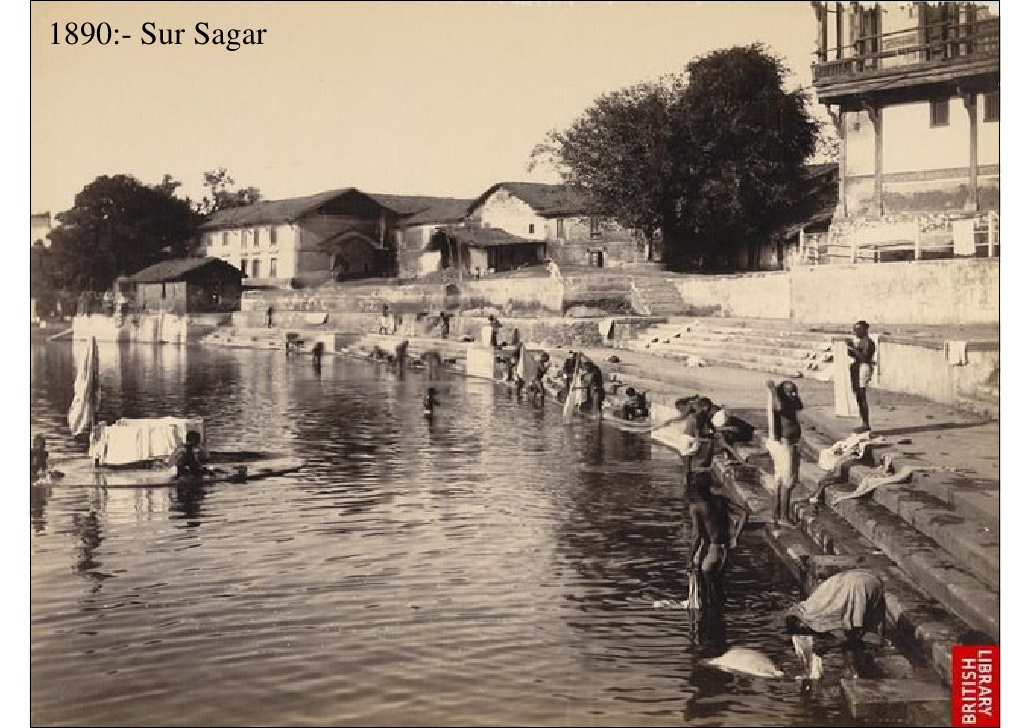 Recent History
Recent History
The golden period in the Maratha rule of Vadodara started with the accession of Maharaja Sayajirao III in 1875.
Geography
Climate
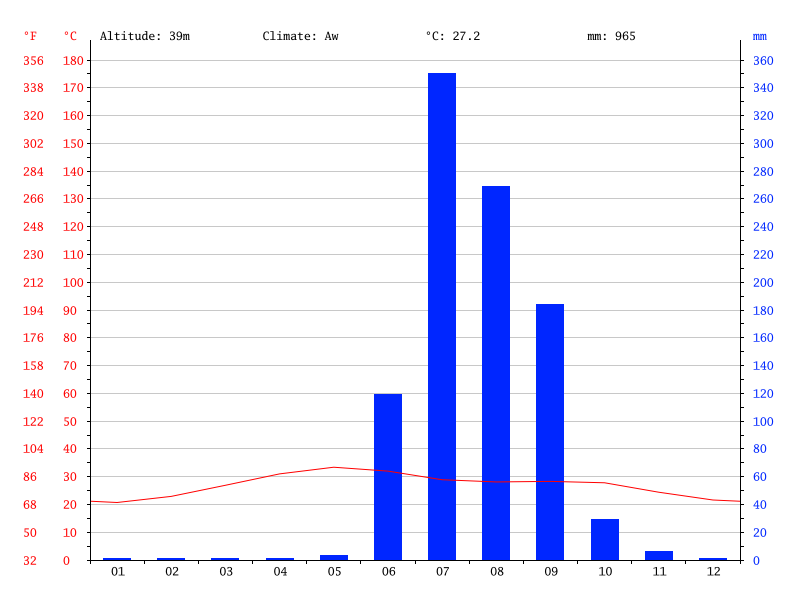
The highest recorded temperature was 46.7 °C (116.1 °F) on 11 May 1960 crossed with 48.0 °C (118.4 °F) on 19 May 2016,
while the lowest recorded temperature was -1.1 °C (30.0 °F) on 15 January 1935.
Transport

By Air
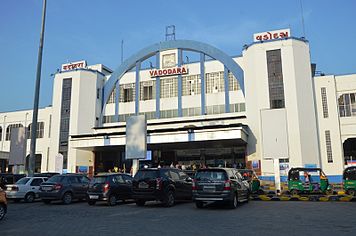
By Rail
Vadodara Junction railway station is Gujarat's busiest junction with almost 358 trains passing through every day. It
comes under Vadodara Division of Western Railways. Passengers can travel to almost all the parts of India from Vadodara
Junction, where there is a junction from the directions of Ahmedabad, Mumbai, Delhi and Kota (all four directions). It
has one of the largest electric locomotives sheds in Gujarat and various trains have a loco change over at Vadodara.
Trains such as Rajdhani, Shatabdi, Duranto and important mail/express trains halt at Vadodara Junction. Apart from various
small railway stations, Vadodara has 10 major railway stations namely Vadodara Junction (BRC'), Pratapnagar, Vishwamitri,
Makarpura, Karajan (Miyagaon), Itola, Varnama, Bajwa, Ranoli, and Nandesari.
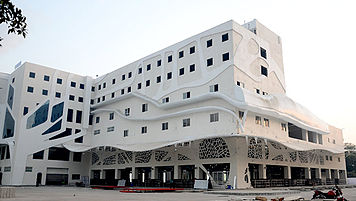
By Road
Public transport vehicles within the city include buses, autorickshaws, and taxis. Buses owned by VMSS for public
transportation are operated by the private bus operators Vinayak Logistics, which now runs over one hundred buses of
33- and 50-seater configurations. This development has reduced two-wheeler traffic as well as provided a safe and cheap
transport service.
Recently a new bus terminal was inaugurated in Vadodara by Narendra Modi the former Chief Minister.
A bus rapid transport system (BRTS) for the city is planned for the future.
Statistics regarding roads in Vadodara :
Tourists Places in Vadodra
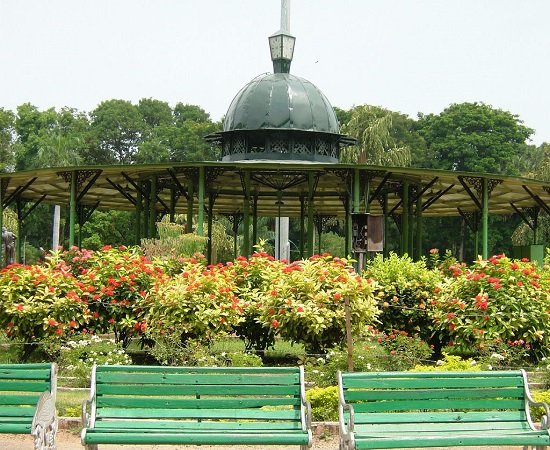
Sayaji Gardens
Built in 1894, the Baroda Museum and Picture Gallery within Sayaji Baug preserves a rich collection of art, sculpture,
ethnography and ethnology. Major attractions of this museum include Egyptian mummy and skeleton of a blue whale. The
picture gallery, which was opened in 1921, exhibits art works of British painters.
The Sardar Patel Planetarium, situated near the main gate of Sayaji Baug, offers daily public shows as well as special
shows to educational institutions. In 1879, a zoo was opened inside the park, on both the banks of the Vishwamitri River.
The Sayaji Baug Zoo features 167 types of 1103 animals, most popular of which is the Asiatic lions. An aquarium
containing 45 species of fish was added to the Sayaji Baug Zoo in 1962.
The Floral Clock standing erect inside the park is the first of its kind in the state. The machinery of the clock is
underground, and its hour, minute and seconds hands move on a 20 ft diameter dial. Another attraction of this park is the
toy train that serves as a ride for children below 12 years of age. Running on a small track width of 10 inches along a
distance of 3.5 km, this toy train allows the children to explore the entire park.
Located opposite the main entrance of the railway station, the Sayaji Baug is easily accessible from the city via local
conveyances such as buses and auto rickshaws.
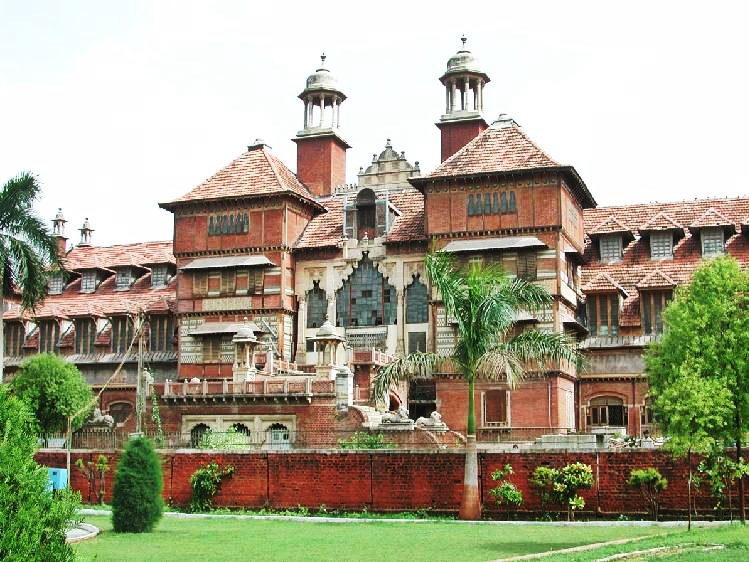
Vadodra Museum and Picture Gallery
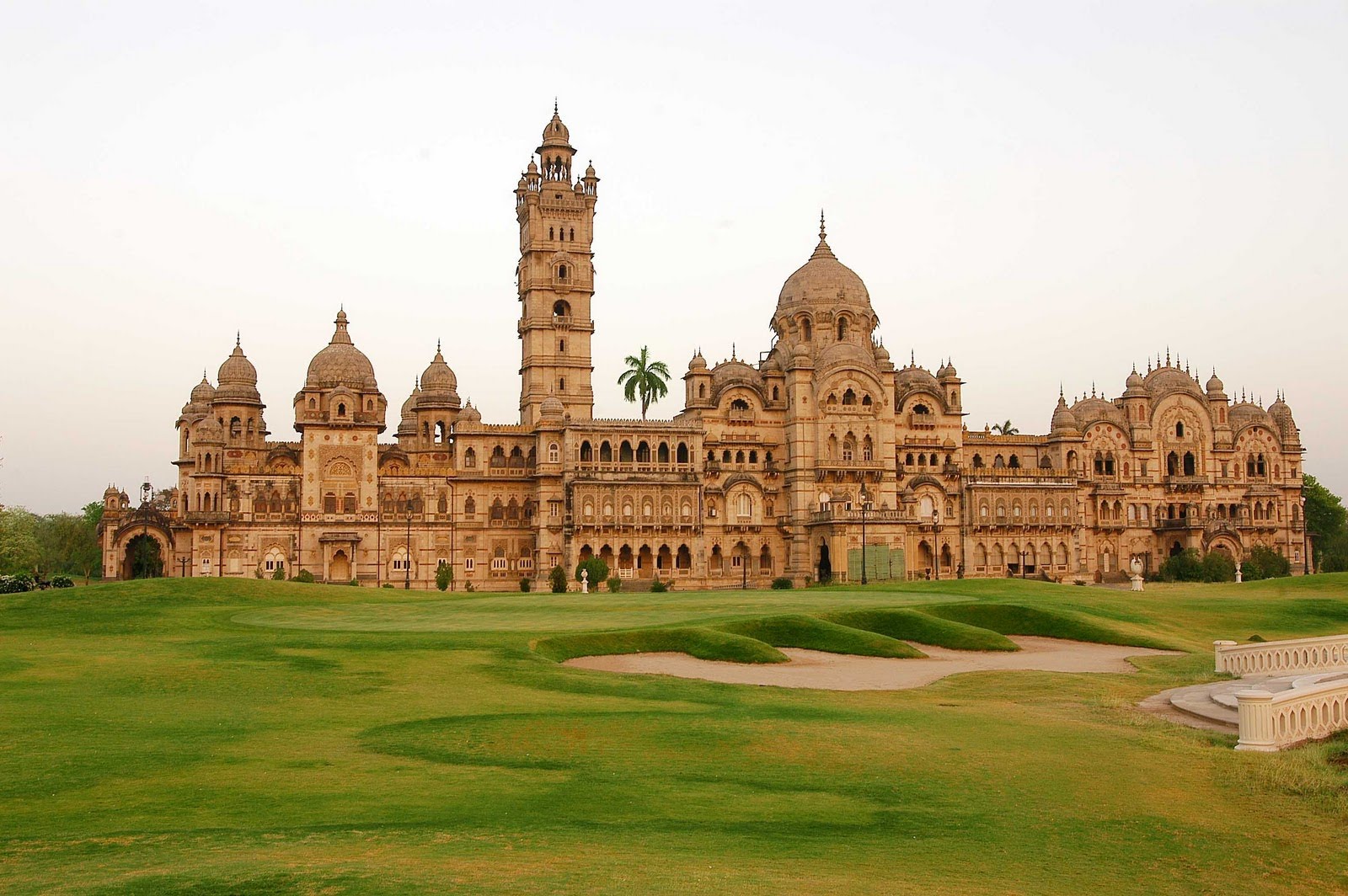 Laxmi Vilas Palace
Laxmi Vilas Palace
A striking feature of the palace is its Darbar Hall, which often serves as the venue of music concerts and other cultural
events. Characteristic of a Venetian mosaic floor, Belgium stained glass windows and walls decorate with mosaic, this
hall opens into an Italianate courtyard of water fountains. Besides, the 700 acres compound of the palace also houses
other buildings such as the Moti Baug Palace and the Maharaja Fateh Singh Museum.
The museum exhibits a rich collection of art works that belong to the royal family, including paintings of Raja Ravi
Varma and others depicting Hindu mythology. Entrance of this beautiful museum is marked by a refurbished train engine of
what was once a miniature railway line. Evidences of the past can be found elsewhere in the palace as well, such as the
old armoury and sculptures in bronze, marble and terracotta by Fellici.
Situated adjacent to the Moti Baug Palace and the Museum is the Moti Bagh Cricket Ground, offices of the Baroda Cricket
Association, and an indoor teak-floored tennis court and badminton court. The Moti Baug Palace has been transformed in
the club house of Gaekwad Baroda Golf Club that houses a swimming pool, sauna and gym facilities. Other than these, the
palace houses a small zoo and a fine baoli or step well called Navlakhi.
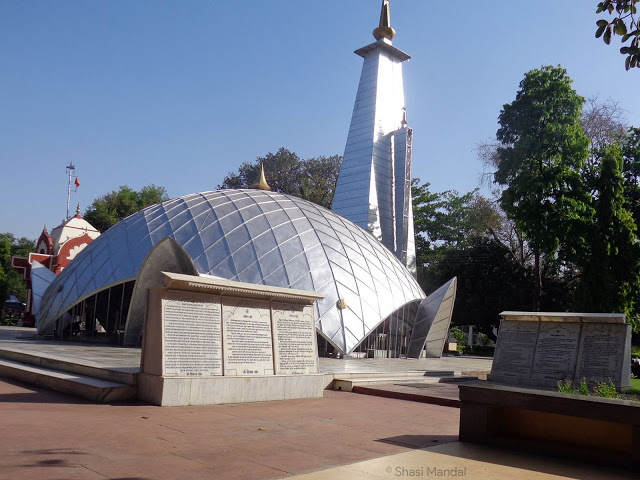 EME Temple
EME Temple
Depicting army architecture, the aluminium building of this temple is ringed by a garden featuring a rich collection of
106 ancient statues from the 6th to the 16th centuries. As a matter of fact, photography is strictly prohibited in this
temple and thus visitors are not allowed to carry any kind of cameras inside. From anywhere in the city, the temple is
easily accessible via local transport means like buses and auto rickshaws.
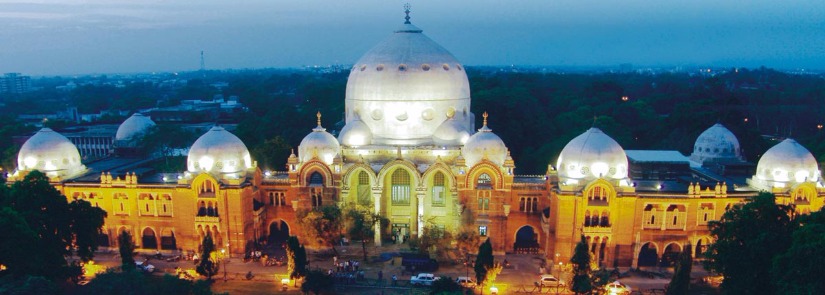 Maharaja Sayajirao University
Maharaja Sayajirao University
The main building of this university, now housing the Faculty of Arts, was designed by Robert Fellowes Chisholm. Posing
an Indo-Saracenic architecture style, the building features a confluence of Indian and Byzantine arches, and domes in
brick and polychrome stone. Other attractions of the university are Faculties of Fine Arts and Performing Arts and the
Hansa Mehta Library that has over 700,000 books and old journals.
The M. S. University offers education in all fields, including science, commerce, arts, law and many more. Unlike other
universities in Gujarat, the medium of instruction for all courses in MSU is English. Spreading over approximately 275
acres of land, this university has roughly 25000 students on its rolls.
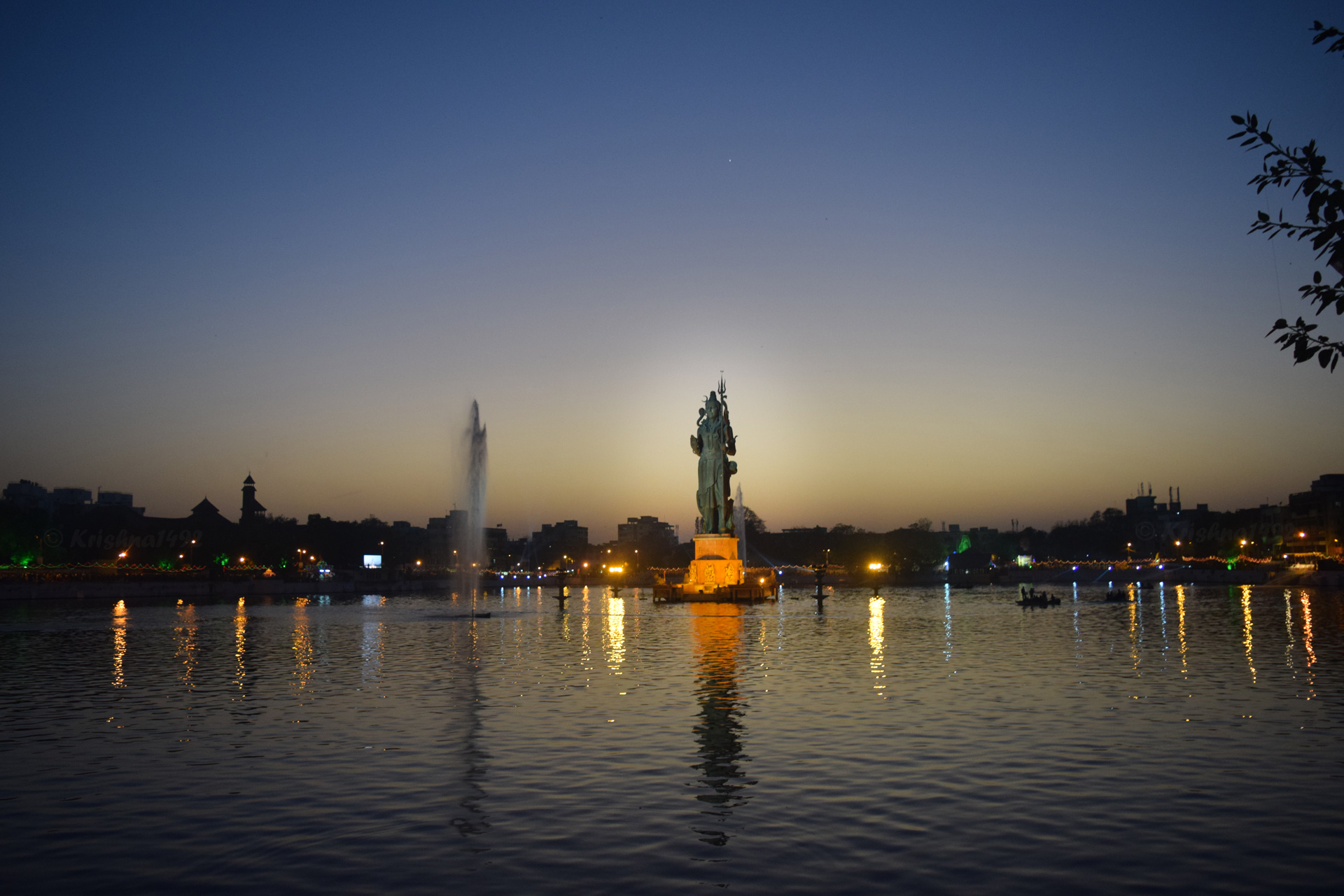 Sursagar Lake
Sursagar Lake
Several underground gates have been constructed to empty the lake in case it shows signs of overflowing. Water from these
gates gushes to river Vishwamitri, which flows through the city of Vadodara. The lake is now being used for boating
purposes, and looks extremely beautiful particularly on moonlit nights. Special lightings adorn the lake on weekends
(Saturdays and Sundays), in the evening between 8pm and 10pm.
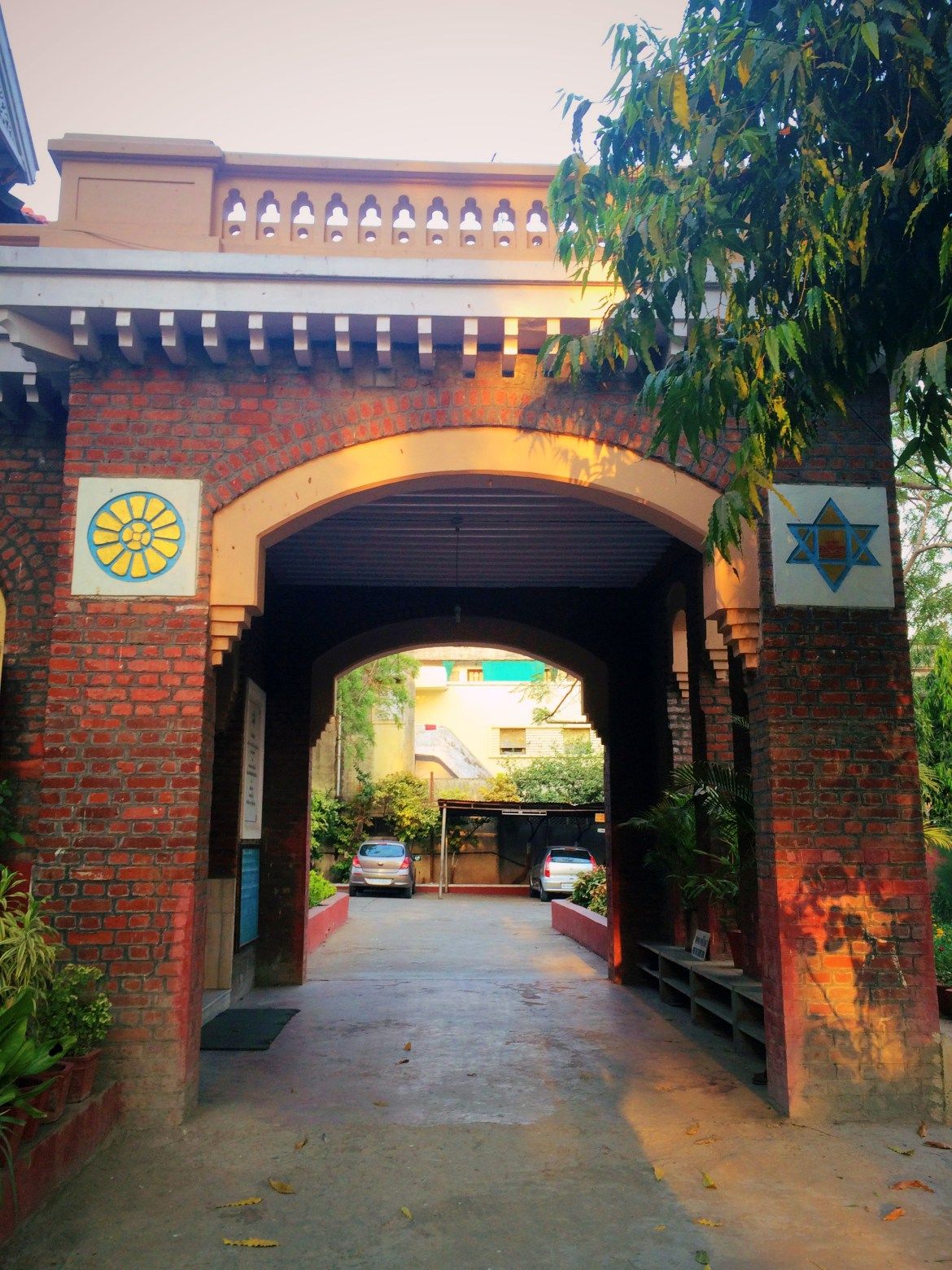 Aurobindo Ashram
Aurobindo Ashram
The bungalow was then visited by famous people like Lokmanya Tilak, Bipin Chandra Pal, Sister Nivedita and Sakharam
Ganesh Dueskar. Frequent visitors included wife Mrinalini Devi, sister Sarojini Devi and younger brother Barindar Kumar
Ghose. The Niwas is now an ashram housing a library of Aurobindo literature, a study room and a sales emporium. The
ashram features relics of Sri Aurobindo, and is open to all for meditation.
Culture
 Religion and Festivals
Religion and Festivals
Apart from this, Ganesh Chaturthi and Uttarayan are also celebrated with great zeal. During Ganesh Chaturthi, there are
many Ganesh pandals (stalls) arranged at the streets of the city. These are kept for seven days or ten days before the
idol of Ganesha is immersed in various water bodies in the city and majority of them are immersed at Sursagar Lake.
People also have these idols placed at their home for short periods.
Uttarayan is a festival of kites, music and "tilgud" in the city. Before the festival starts, the markets are lined up
with vendors selling kites, threads, balloons, and firecrackers as well as various local cuisines. At night the sky is
illuminated by crackers, kandils and fire balloons. The Marathi women here also perform "Haldi Kumku".
The most followed religion in the city is Hinduism, practiced by 85% of the population. The second most followed religion
is Islam, followed by 12% of the population. All other religious groups make up the remaining 4% of the population.
 Art and Architecture
Art and Architecture
Sports

